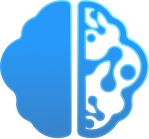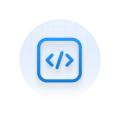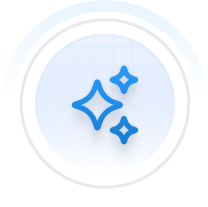Introduction
Let’s just say it out loud: data is messy. Perhaps in some utopia, it fits into well-organised spreadsheets and tables. In the real world, however, data is found in an uneven mix of structured and unstructured data, with the latter hiding the lion’s share of insights. Think audio (call recordings, audio notes, etc.), image (photographs, scans, etc.), text (emails, notes, messages, etc.), and video (CCTV, videos, meetings, etc.). What’s more, the volume of this data being generated is staggering.
The big-data revolution has amassed such vast amounts of data that we've barely scratched the surface in terms of its utilisation. There's an extensive reservoir of untapped insights waiting to be discovered. The potential for in-depth analysis is colossal.
Traditionally, working with large amounts of unstructured data (like images and video) required intricate algorithms and specialised software, making it a complex and time-consuming task. Its lack of a predefined format made it difficult to analyse with traditional data analysis methods.
On the other hand, while structured data was more organised and easier to query, it often required extensive data cleaning and preprocessing to handle missing values, outliers, and potential inaccuracies.
The emergence of Large Language Models has made it significantly easier to preprocess and analyse large volumes of this heterogeneous data. Because of the versatility and diversity of today’s data landscape, we need LLMs to be multi-modal.
What is Multi Modality?
At its core, multi-modality represents the convergence of diverse data types and forms into a singular, cohesive framework. This concept spans a broad spectrum, from numerical data and tables to text, voice recordings, images, videos, and even gestures. It's the idea of synthesizing varied inputs to create a richer, more comprehensive output.
Narrowing down to the realm of Large Language Models (LLMs), multi-modality takes on a transformative role. In this context, it allows LLMs to process, understand, and generate outputs based on a myriad of data types. Instead of being confined to just text, multi-modal LLMs can interpret images, analyze voice patterns, and even understand gestures, making them incredibly versatile and powerful tools in the tech landscape.
How does a multi-modal LLM help us?
The power of LLMs lies in their ability to learn from massive amounts of varied data. This property allows them to grasp the nuances of language and context.
Large Language Models (LLMs) combine text, images, and audio processing seamlessly, offering a wide range of benefits across industries. This breakthrough enhances communication by better understanding context, enabling the creation of diverse multimedia content, and improving image and video analysis. It also promotes accessibility and deepens data interpretation. We can also see how combining different types of data - text, voice, video, images, and tabular data - can lead to improved and more efficient decision-making in various industries.
Multi-modal LLMs unlock new possibilities for businesses and act as a major catalyst for AI-driven innovation. These models will fundamentally reshape how we engage with and leverage data in diverse realms.
Here is where products like Akaike’s BYOB become helpful. They allow you to harness the full potential of a Large Language Model (LLM) trained explicitly to your domain. This contextualisation empowers the model to provide highly accurate and contextually relevant responses, making it an invaluable asset for addressing a wide array of specialised tasks with precision and efficiency.
Let's explore how versatile a multi-modal LLM product like BYOB is and how it can be leveraged across various departments and industries.
(You will notice that an underlying theme for most industry data is- while it is available in large amounts in both structured and unstructured form- it is underutilised and siloed. BYOB can potentially solve for that. It will not just process the data and integrate it for use, but also tell you how it can be used.)
DEPARTMENT
INDUSTRY
- HEALTHCARE
- ECOMMERCE
- FINANCE
- LEGAL
- MANUFACTURING
- MARKETING
- EDUCATION
- AGRICULTURE
- GOVERNMENT AND PUBLIC SECTOR
Human Resources
Data Landscape: The Human Resources sector is a repository of very diverse data. By definition, we are looking at metrics that aren’t easily quantifiable. This encompasses structured formats like performance metrics and payroll records, as well as unstructured types such as video interviews, employee feedback, and email communications.
Specific Challenges in Data Utilisation: HR professionals often face the challenge of holistically assessing candidates and employees due to the sheer variety of data. Integrating insights from both structured and unstructured data to make informed decisions about hiring, promotions, or training can be complex. Additionally, ensuring fairness and transparency in decision-making, given the vast data sources, remains a consistent hurdle.
Functionality of Multi-modal LLMs: Multi-modal Large Language Models (LLMs) are great at processing and analysing this varied data. When tailored to HR datasets, these LLMs can provide comprehensive insights about employee satisfaction and progress and other metrics. This will help enhance candidate assessments, facilitate effective employee engagement strategies, and ensuring data-driven decision-making.Furthermore, it will provide a data-driven explanation of the decision-making process, promoting transparency and fairness.
Sales
Data Landscape: In the realm of sales, data is generated at every customer touchpoint. This includes structured data like sales figures and lead information, and unstructured data such as call recordings, customer feedback, and email interactions.
Specific Challenges in Data Utilisation: Sales professionals grapple with the task of effectively harnessing this data to guide their strategies. From lead generation to conversion, the challenge lies in correlating diverse data sources to gain a holistic view of the customer journey. This is crucial for optimising each stage of the sales funnel and ensuring a seamless transition for potential customers.
Functionality of Multi-modal LLMs: Multi-modal Large Language Models (LLMs) are equipped to process and analyse the multifaceted data in sales. When trained on sales-specific datasets, these LLMs can provide actionable insights at every stage of the sales funnel. This includes refining lead targeting, enhancing customer engagement, and optimizing conversion strategies, ensuring a streamlined and effective sales process.
Healthcare
Data Landscape: The healthcare sector is a rich source of varied data. Alongside structured elements like patient records and lab results, there's a vast amount of unstructured data- medical images, radiology scans, doctor's notes, and more.
Specific Challenges in Data Utilisation: Despite the wealth of information, the industry faces hurdles. The diverse and voluminous nature of the data often complicates early symptom detection, both in diagnostic and preventative realms. This can lead to missed opportunities for timely interventions.
Functionality of Multi-modal LLMs: Multi-modal Large Language Models (LLMs) offer a functional solution. When trained on healthcare data, these models can adeptly discern intricate health patterns, improving diagnostic accuracy and enabling more informed preventative care strategies.
E-commerce
Data Landscape: E-commerce platforms are data-rich environments. They generate structured data such as sales metrics, inventory levels, and customer demographics, as well as unstructured data like product reviews, customer queries, and product images.
Specific Challenges in Data Utilisation: The game here is Optimisation Optimisation Optimisation. For e-commerce businesses, the challenge lies in synthesising this vast and varied data to enhance user experience. From understanding customer preferences to optimising inventory management, there's a need to integrate insights from both structured and unstructured sources to drive sales and ensure customer satisfaction. Data often remains underutilised due to the inability to correlate insights across different data modalities. This leads to less-than-optimal customer experiences and operational inefficiencies.
Functionality of Multi-modal LLMs: Multi-modal Large Language Models (LLMs) are tailored to handle the intricacies of e-commerce data. When trained on e-commerce datasets, these LLMs can offer insights that optimise product recommendations, streamline inventory management, and enhance customer support, ensuring a seamless shopping experience for users.
Finance
Data Landscape: The finance sector juggles a mix of data types. This includes structured formats like transaction records and financial statements, alongside unstructured data such as market news, analyst reports, and client communications.
Specific Challenges in Data Utilisation: Navigating the finance world requires sifting through vast data to make informed decisions. The challenge? Correlating diverse data sources to spot market trends, assess risks, and predict future financial shifts. Moreover, the rapid pace of the financial world demands real-time data analysis for timely decision-making.
Functionality of Multi-modal LLMs: Multi-modal Large Language Models (LLMs) are primed for the financial data maze. When trained on finance-specific datasets, these LLMs can pinpoint market sentiments, analyze transaction patterns, and forecast financial trends, aiding in more precise and timely financial strategies.
Legal
Data Landscape: When we think law, we think mountains of paperwork. The Legal sector is a labyrinth, teeming with data - from structured case histories and legal precedents to the more unstructured realms of court proceedings, whether they be in audio or video, and the myriad of client communications.
Challenges in Data Utilization: The sheer depth and breadth of this data present a formidable challenge. Sifting through, correlating, and deriving insights from both structured and unstructured data can be a herculean task. This often translates to extended case timelines and strategies that might not fully harness the available information.
Functionality of Multi-modal LLMs: Enter the capabilities of multi-modal Large Language Models (LLMs). These models, when attuned to the nuances of legal data, can revolutionise the way legal professionals operate. From dissecting legal documents to in-depth case reviews and litigation support, they promise a more navigable and enriched understanding, poised to significantly elevate the efficiency and efficacy of legal processes.
Manufacturing
Data Landscape: The manufacturing sector is a veritable treasure trove of data. Alongside structured components like machine logs and production schedules, there's a vast array of unstructured data, encompassing maintenance reports and product images pivotal for quality assurance.
Challenges in Data Utilization: The crux of the matter is the evident underutilization of this data. This oversight often culminates in operational hiccups and a lag in addressing pressing issues, hindering optimal production flow.
Functionality of Multi-modal LLMs: This is where multi-modal Large Language Models (LLMs) come into play. These models, when fine-tuned to the manufacturing milieu, can weave together disparate data strands, offering a cohesive operational view. Imagine correlating machine logs with maintenance narratives to preemptively flag maintenance needs, ensuring product quality, and fine-tuning production workflows. It's about harnessing the latent potential of previously overlooked data, guiding not just in comprehension but also in actionable insights
Marketing
Data Landscape: Marketing is all about understanding users and their behaviour. This means any data we get about users gives us insight and we need to use. Yes, it is campaign metrics and customer demographics, but it is also customer feedback, social media content. It is all about understanding how the your users respond to the content you are putting out.
Challenges in Data Utilisation: Despite the richness of this data, there's a recurring challenge: effectively harnessing it to craft resonant messages and strategies. The diverse nature of the data often makes it difficult to glean a holistic understanding of customer behaviour, preferences, and the evolving market landscape.
Functionality of Multi-modal LLMs: Imagine understanding feedback data in real-time, and proactively changing strategy to better target your audience. Or being able to customise content to a more specific audience segment.
This is where multi-modal Large Language Models (LLMs) shine. When attuned to the nuances of marketing data, these models can weave together insights from varied data sources. This enables marketers to craft more targeted campaigns, understand real-time audience sentiment, and predict emerging market trends, ensuring that every marketing move is data-informed and strategically sound.
Education
Data Landscape: The educational sector is replete with a myriad of data types. This encompasses structured data like student performance metrics and curriculum modules, alongside unstructured data such as classroom discussions, feedback, and multimedia educational content.
Challenges in Data Utilisation: The traditional educational model, with its broad-brush approach, often struggles to effectively utilize this diverse data. The result? A system that doesn't always cater to individual learning needs, leaving some students feeling underserved, especially those who deviate from the 'standard' learning trajectory.
Functionality of Multi-modal LLMs: Multi-modal Large Language Models (LLMs) offer a promising solution. When attuned to educational data, these models can analyze and correlate varied data points, enabling the creation of tailored learning experiences. This means lessons adapted to individual learning styles, pacing, and needs, fostering a more inclusive and effective educational environment.
Agriculture
Data Landscape: Agriculture is a sector deeply rooted in data. This encompasses structured information like soil quality metrics, crop yield data, and weather forecasts, as well as unstructured data such as satellite imagery, farmer anecdotes, and pest activity reports.
Challenges in Data Utilisation: Despite the wealth of data available, the agricultural sector often faces hurdles in effectively synthesising and acting upon this information. The inability to correlate diverse data sources can lead to suboptimal farming practices, misaligned resource allocation, and missed opportunities for yield optimisation.
Functionality of Multi-modal LLMs: This is where multi-modal Large Language Models (LLMs) come into the picture. When tailored to agricultural data, these models can seamlessly integrate varied data sources, providing actionable insights. From predicting optimal planting seasons based on weather patterns to identifying potential pest infestations through image analysis, LLMs can significantly enhance decision-making and operational efficiency in agriculture.
Government and Public Sector
Data Landscape: The government and public sectors are vast repositories of data. Data that seemingly dates back decades and decades. This includes structured datasets like census records, budget allocations, and policy documents, as well as unstructured data forms such as public feedback, video recordings of public addresses, and inter-departmental communications.
Challenges in Data Utilisation: Given the sheer volume and diversity of data, the government often grapples with challenges in data integration, transparency, and timely decision-making. The inability to efficiently correlate and act upon diverse data sources can lead to policy misalignments, resource misallocations, and gaps in public service delivery.
Functionality of Multi-modal LLMs: Multi-modal Large Language Models (LLMs) can be instrumental in this context. When trained on government and public sector data, these models can provide a holistic view of diverse datasets, enabling more informed policy-making, efficient resource allocation, and enhanced public service delivery. By synthesising varied data points, LLMs can aid in crafting strategies that resonate more closely with public needs and sectoral objectives.


.png)

.png)

.png)
.png)
.png)
.webp)




%201.png)

%201.png)

